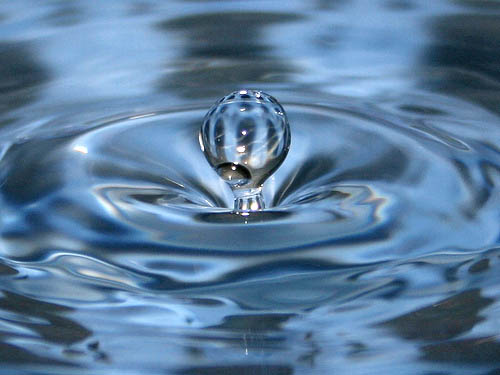
Water crisis growing on California's Central Coast
Water crisis has cities and agriculture searching for solutions.Groundwater overdrafting and salt water intrusion exacerbated by urban and agricultural growth over the past three decades have reached well beyond taxing.Salt water intrustion continues decades after problem identified.The water crisis in the Paso Robles area has escalated over the past 15 years, much of it coinciding with a growing wine grape industry and its desire for water.
January 6, 2012

When Californians talk about living or working “on the water,” it’s likely in reference to the state’s 840-mile coastline.
However, the infinite blue Pacific Ocean might as well be a desert to those who call the Central Coast home where fresh water is becoming as scarce as a flock of snow geese in the Sahara.
A trio of water purveyors from three areas of the coast: Monterey County, the Santa Maria Groundwater Basin and the city of Paso Robles, detailed legal and environmental issues resembling an octopus’s tentacles challenging their respective areas to at least maintain rapidly depleting water supplies.
Groundwater overdrafting and salt water intrusion exacerbated by urban and agricultural growth over the past three decades have reached well beyond taxing with such ideas as:
Towing Arctic icebergs to the coast to melt for fresh water.
Building cisterns for homeowners to catch drinking water supplies.
Collecting fog for water.
As far out as those may seem, water suppliers have come close to the bizarre by installing a large rubber bladder for a lake spillway to increase water capturing ability and using treated sewer water to grow vegetables, both desperate measures in anyone’s book. However, these are frantic times along the blue Pacific.
The problem is not new. It has just accelerated since the 1990s with rapid urban growth in all areas and agricultural growth in some areas.
Salt water intrusion taking away fresh groundwater supplies was first documented in 1930, Robert Johnson from the Monterey County Water Resources Agency told the Sustainable Ag Expo in Paso Robles, Calif. Governments started looking for solutions 65 years ago and are still working on it.
“Salt water intrusion has slowed over time. I think we are doing pretty well,” he said, but it still removes fresh groundwater water access from about 200 acres per year.
Johnson joined Keith Larson, water conservation manager for the City of Paso Robles, and Michael Winn, director of the Nipomo Community Services District, in detailing the water crisis facing the Central Coast from Santa Maria to Monterey to those at the expo, sponsored by the Central Coast Vineyard Team.
Agricultural and urban interests use about 600,000 acre feet of water annually in Monterey County with agriculture using 90 percent of that. There are 3,000 wells in the county; 1,900 are agricultural wells. However, Johnson said many of those wells are capped or otherwise not utilized.
Halting salt water intrusion
The first step in halting salt water intrusion is to stop pumping along the coast and that has happened in most areas. The second solution is to develop new water supplies and that is why lakes Nacimiento and San Antonio were developed. They hold about 700,000 acre feet of water combined.
To replace water lost to reduced pumping, the county resources agency has built sewer treatment plants to provide tertiary treated water for agricultural crops. 13,000 acre feet of treated water are now delivered to farmers in the Castroville area from a sewer treatment plant. There remains a need to pump about 9,000 acre feet annually.
The agency also added the rubber bladder to Nacimiento lake to capture more water. Johnson said this move does not represent the development of “new” water. It created “flexibility” to capture water during certain times of the year.
During a “dry year” like 2009, this bladder allows water mangers to keep the lake full.
Winn cited California’s history from the days when water was used to mine gold. Today, water is the gold in California.
Winn is a water master in the Santa Maria area where access to water is tangled up in court. It has cost farmers, cities and urbanites millions so far without a firm resolution.
It evolves around who should pay for cleaning out silt behind a dam and who owns the water beneath the surface.
Twitchell Reservoir was built in 1959 in southern San Luis Obispo County and northern Santa Barbara County. The dam and reservoir provide flood control and water conservation. Water is stored in the reservoir during big winter storms and released as quickly as possible while still allowing it to percolate into the soil and recharge the groundwater. Sedimentation is a problem for the reservoir and now the lake is almost half silted up.
Winn said the city of Santa Maria wanted to clean out the silt and asked the famers who benefited from the dam to pay for it. Winn said farmers said no.
That issue along with disputes over who owns groundwater prompted lawsuits that were filed initially in 1997 and are still in court.
Winn said a water master is to be appointed as part of a court-ordered settlement of the lawsuits.
This water master, according to Winn, will decide who gets the available water.
Escalating water crisis
The water crisis in the Paso Robles area has escalated over the past 15 years, much of it coinciding with a growing wine grape industry and its desire for water.
Larson said this and urban growth has resulted in water tables dropping more than 70 feet in some areas since 1997. Some wells are producing water at only 15 percent of their design capacity. Sixty-seven percent of the groundwater is used by agriculture and the rest by commercial and urban users.
The city of Paso Robles conducted a study with recommendations on how to reverse the overdraft situation.
Cities around Paso Robles are joining together to promote conservation to hopefully stabilize the water table while working to develop new water supplies. The latter will include a new $50 million sewer treatment plant.
The area has already taken 17,500 acre feet of entitled state water from Lake Nacimiento used to reduce pumping by cities around Paso Robles. There are 20,000 acre feet remaining.
Along with upgrading the city’s sewage treatment facilities, Larson said the city is looking at creating recharge basins.
Outreach and education efforts are underway to improve water use efficiency. Much of this is coming from a best management practices committee made up of all stakeholders meeting once a month.
It is obvious there are no easy solutions for the Central Coast agricultural and urban water crisis, especially since people continue to want to live and work on the coast.
As Larson pointed out, Monterey has been gnawing away at its water crisis since 1946, and the Santa Maria area has been entangled in legal issues for almost two decades.
About the Author(s)
You May Also Like





